Cleaning and disinfecting one’s home after getting COVID-19 is of utmost importance. Not only can it prevent the virus from spreading to others, but it also promotes a healthier environment for the person recovering.
In this detailed guide, we will explore the best practices and procedures for ensuring a safe and germ-free living space post-infection. Let’s make sure that once COVID-19 exits your life, it doesn’t linger in your surroundings!
The Basics Of COVID-19 Transmission
Understanding how the virus spreads will empower you to take effective measures against it.
The Lifespan of The Virus on Surfaces
COVID-19, caused by the novel coronavirus, primarily spreads through respiratory droplets when an infected person coughs or sneezes.
However, these droplets can land on various surfaces, where the virus can survive for different periods. Some studies suggest that the virus can live up to:
- 3 hours in the air
- 4 hours on copper
- 24 hours on cardboard
- 2 to 3 days on plastic and stainless steel.
Therefore, regular and thorough cleaning of frequently-touched surfaces becomes paramount.
The Importance of Personal Hygiene

While surface disinfection is critical, we must not neglect the importance of personal hygiene in curbing the spread of the virus. After all, we can inadvertently become carriers by touching contaminated surfaces and then our faces.
Regular handwashing, with soap and water for at least 20 seconds, can effectively eliminate the virus. In situations where soap and water aren’t available, a hand sanitizer containing at least 60% alcohol serves as a good alternative.
Remember, hand hygiene isn’t a one-off task but a continuous practice.
First and Foremost – Disinfecting High-Touch Surfaces
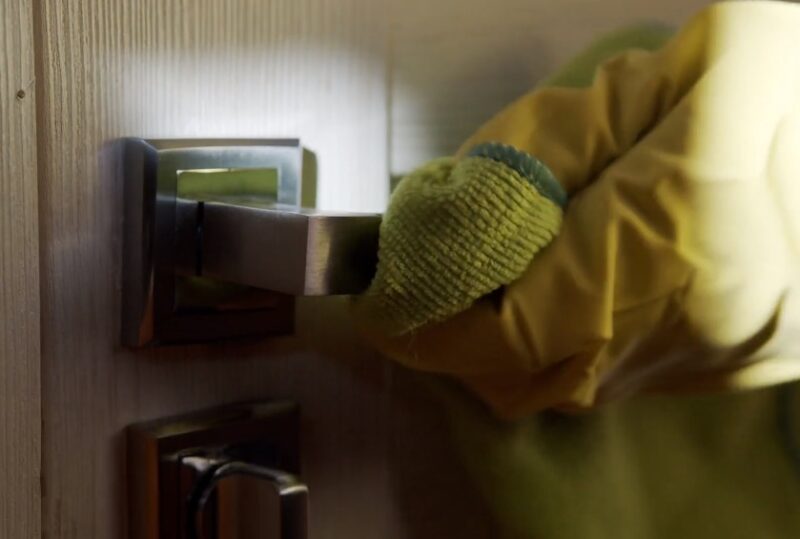
High-touch surfaces are the prime hotspots for virus accumulation. Prioritizing their cleaning will greatly reduce the risk of spread.
Identifying Key Areas
First and foremost, identify the areas in your home that are most frequently touched. This generally includes:
| Area | Description |
|---|---|
| Door handles | A gateway to both indoor and outdoor germs. |
| Light switches | Touched multiple times a day. |
| Remote controls | A shared item among household members. |
| Countertops | Used for a myriad of tasks, from cooking to storing items. |
By recognizing these high-risk zones, you can develop a focused cleaning regimen.
Using The Right Disinfectants
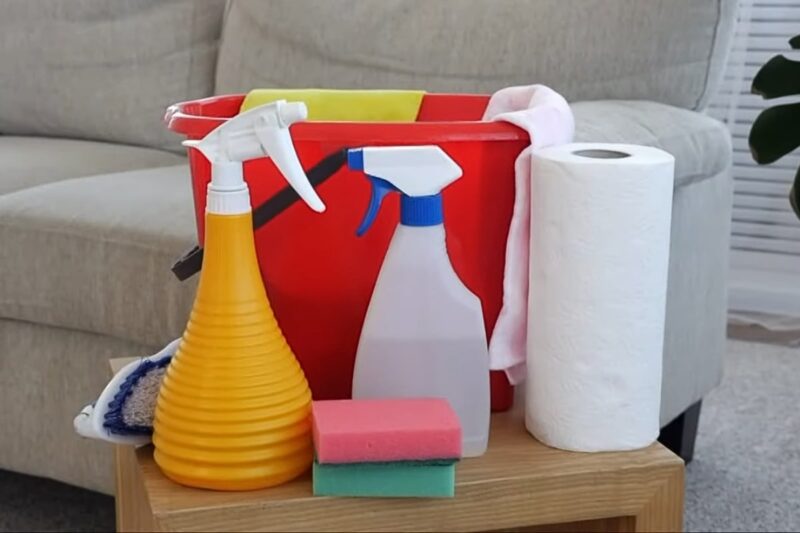
All cleaning agents are not made equal, especially when combatting COVID-19.
To ensure effective virus extermination, opt for disinfectants that are on the Environmental Protection Agency (EPA)’s List N for use against SARS-CoV-2, the virus that causes COVID-19.
While ready-made disinfectants are readily available, you can also prepare a homemade solution using a mixture of bleach and water. Ensure a dilution of 4 teaspoons of bleach per quart of water.
However, always wear gloves and ensure proper ventilation when working with bleach.
Addressing Soft Surfaces
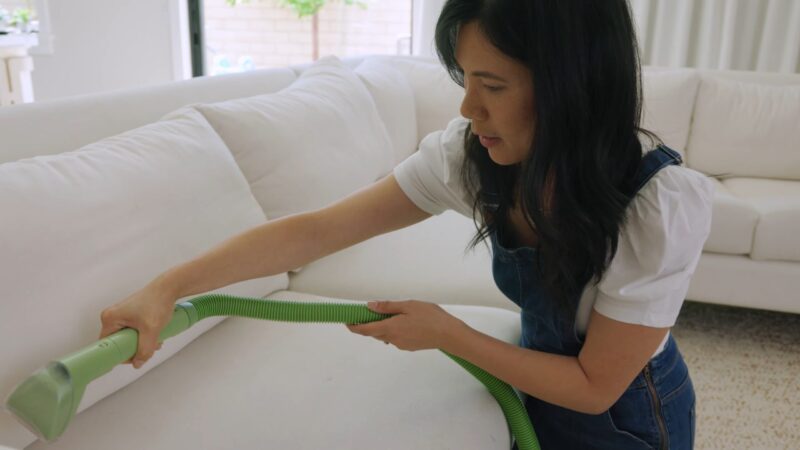
Soft surfaces such as carpets, drapes, and couches also harbor germs.
Cleaning Fabrics
While it’s true that the virus’s lifespan on soft surfaces isn’t as long as on harder ones, it’s still crucial to clean them diligently. For fabrics, begin by using soap and water or suitable cleaners.
Following the initial clean, consider applying an EPA-approved disinfectant suitable for soft surfaces. For items like pillows and stuffed toys, a run in the washing machine on the warmest appropriate setting should suffice. Don’t forget to dry them completely.
Rugs and Carpets
Rugs and carpets can be a tad trickier. Begin by vacuuming, ensuring you cover all areas thoroughly. If your carpet or rug is machine-washable, you can wash it using warm water and then dry fully.
If not, after vacuuming, use carpet cleaners that are on the EPA’s List N. While cleaning, remember to ensure adequate ventilation in the room. This aids in removing airborne virus particles and reduces the risk of inhaling harmful chemical fumes from the cleaners.
Taking Care of Electronics

In today’s digital age, our devices are as much a part of our households as our furniture. It’s essential to keep them germ-free, especially after a COVID-19 infection.
Phones, Tablets, and Laptops
Your smartphone is likely one of the most frequently touched items in your daily routine. Given the nature of COVID-19 transmission, cleaning them becomes vital. Start by unplugging the device and turning it off.
Use disinfectant wipes, ensuring they aren’t too wet, and gently wipe down the entire surface. Avoid using bleach on these items. Finally, dry the device using a microfiber cloth to prevent any streaks or residue.
Keyboards and Mice
These computer peripherals are touched often and can harbor germs. Unplug or turn off the device before cleaning. Use a disinfectant wipe, making sure it doesn’t drip liquid into any openings.
For the keyboard, you might want to use a compressed air cleaner first to get rid of any dust or debris between keys.
Cleaning Personal Items and Accessories

Items we wear or use daily might not be visibly dirty but could still carry the virus.
Glasses and Sunglasses
Cleaning your eyewear is straightforward. Use lukewarm water with a mild dishwashing detergent. Gently scrub the glasses, especially the parts that touch your face and ears. Rinse and dry using a microfiber cloth. Ensure you do this regularly.
Jewelry
Many people wear their jewelry every day, especially rings and watches. Most jewelry items can be cleaned using warm water and mild soap. Ensure you dry them thoroughly before wearing them again.
Laundry Protocols After COVID-19
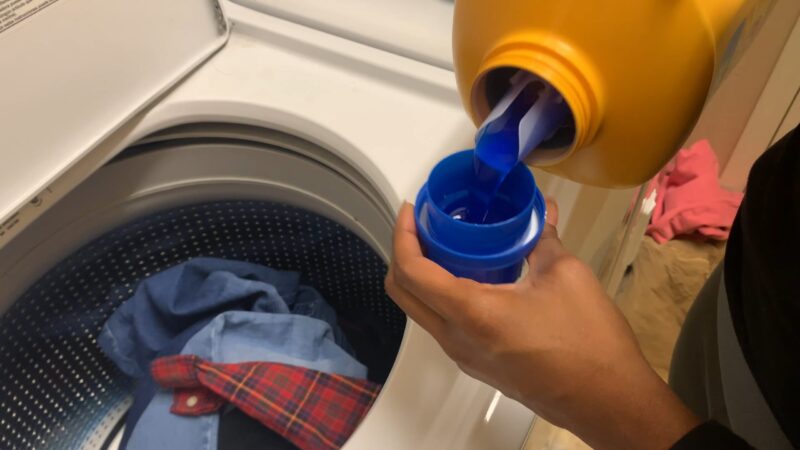
Your clothes, bed linens, and towels can become a refuge for the virus, especially if you’ve been ill.
Handling Contaminated Clothing
When dealing with clothes that have been worn by someone with COVID-19, it’s crucial to handle them with care. Use disposable gloves when touching these items and keep them away from your body.
It’s best to use a separate laundry basket or bag for these clothes.
Washing and Drying
Machine washing your clothes, towels, and linens with regular laundry detergent should suffice. However, use the warmest appropriate water setting for the items and ensure they dry completely.
Sun drying can also be a great option, as the UV rays can act as a natural disinfectant.
Proper Waste Disposal
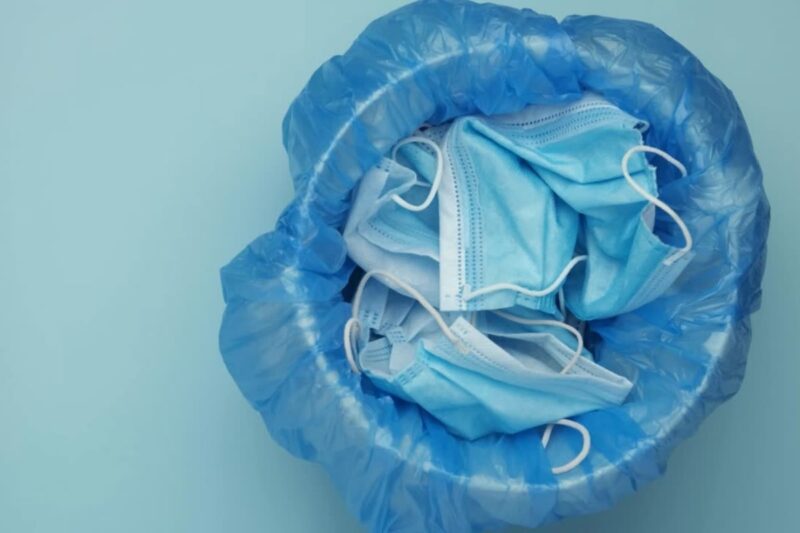
Disposing of waste correctly is paramount, especially if it’s from a room where a COVID-19 patient was isolated.
Handling Medical Waste
Used tissues, face masks, or disposable gloves fall under this category. Make sure you place them in a bag, tie it securely, and then place it in another bag, sealing that as well. Before disposing of the bag, ensure it’s kept out of reach of children and pets.
Regular Waste
Even your regular waste needs attention. Make sure your trash can has a liner, and when disposing of waste, tie the liner securely. Always wash your hands thoroughly after handling waste.
FAQs:
Should I polish packages and groceries?
While the risk from surfaces is low, you can wipe down packages with a disinfectant and wash fruits and vegetables with water.
How can I ensure my cleaning tools, like mops and brushes, are not spreading germs?
Clean and disinfect cleaning tools regularly.
Is it necessary to disinfect outdoor areas?
Focus on cleaning high-touch outdoor surfaces like railings and doorknobs.
How can I wash toys safely?
Clean and sanitize toys according to the manufacturer’s instructions.
How long should I let the disinfectant sit on the surface?
Follow the instructions on the product label. Most disinfectants should remain on the surface for a certain period to be effective.
Conclusion
Navigating life after a bout with COVID-19 can be daunting, especially when faced with the responsibility of ensuring your home is virus-free.
It’s essential to remember that the virus’s presence is not just limited to areas where a COVID-positive person spent the most time. Its potential to spread means a comprehensive cleaning of the entire home is a necessity, not an option.
From the devices we can’t seem to live without to the clothes we wear, everything requires attention. Also, it’s a good practice to maintain these cleaning habits regularly.
Regular cleaning can deter not just the coronavirus but a host of other pathogens that might pose health risks. Here’s to clean homes, robust health, and a resilient spirit. Stay informed, stay vigilant, and most importantly, stay safe.
